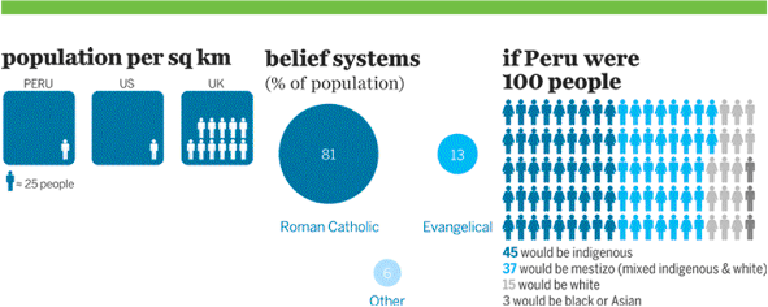Travel Reference
In-Depth Information
Peru Today
Unparalleled Boom
Between the violence of the Conquest, the chaos of the early republic and the succession of
dictatorships that swallowed up much of the 20th century, stability has been a rare com-
modity in Peru. But the first decade of the new millennium has treated the country with un-
characteristic grace. Peru's economy has grown every year since 2003. Foreign investment
is up and the country's exports - in the areas of agriculture, mining and manufacturing -
have been strong. Tourism is also big: the number of foreign travelers going to Peru
doubled between 2003 and 2011 from 1.3 to 2.6 million, according to Mincetur, the gov-
ernment's tourism authority.
In addition, since 2000, a succession of peaceful elections has provided political stabil-
ity. In 2011, former army officer Ollanta Humala was elected to the presidency. The son of
a Quechua labor lawyer from Ayacucho, he has made social inclusion a theme of his pres-
idency. One of his early acts was to make it a legal requirement for native peoples to be
consulted on mining or other extractive activities in their territories.
Cultural Renaissance
The good times have resulted in a surge of cultural productivity - much of it revolving
around food. Once considered a place to avoid, Lima is now a foodie bastion, where gastro-
nomic festivals attract visitors from all over the world. La Mistura, an annual culinary gath-
ering organized by celebrity chef Gastón Acurio drew more than 400,000 people in 2011.

